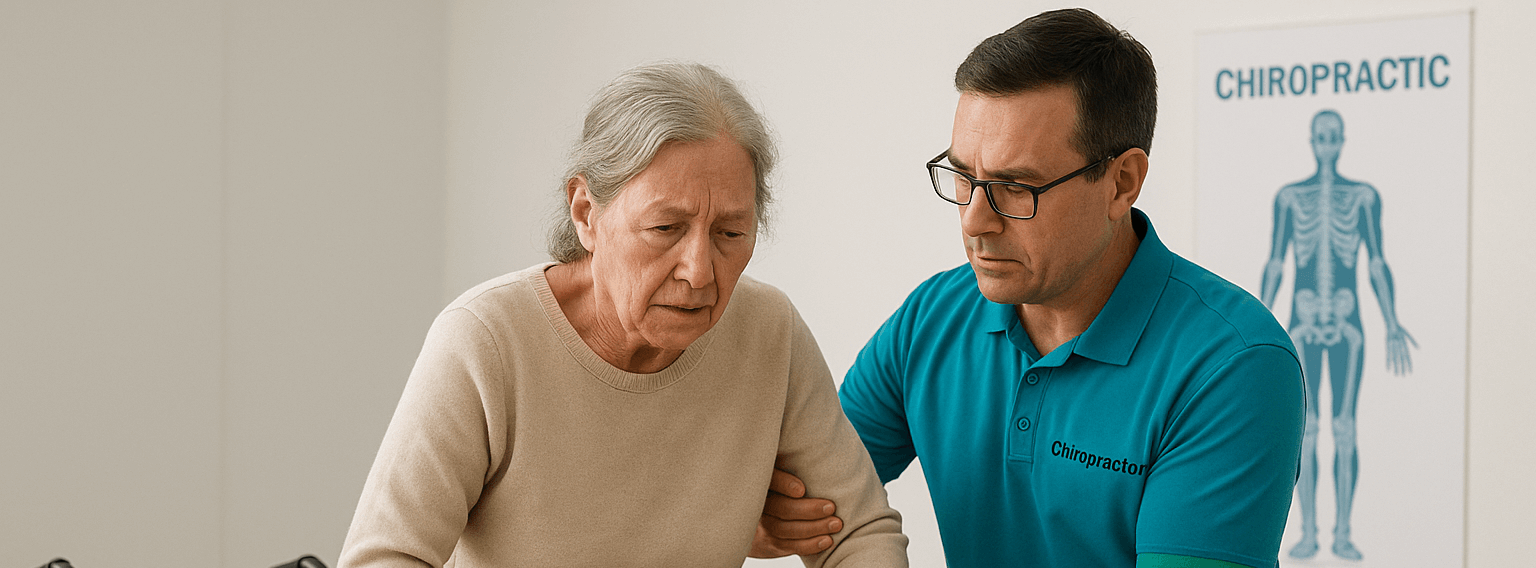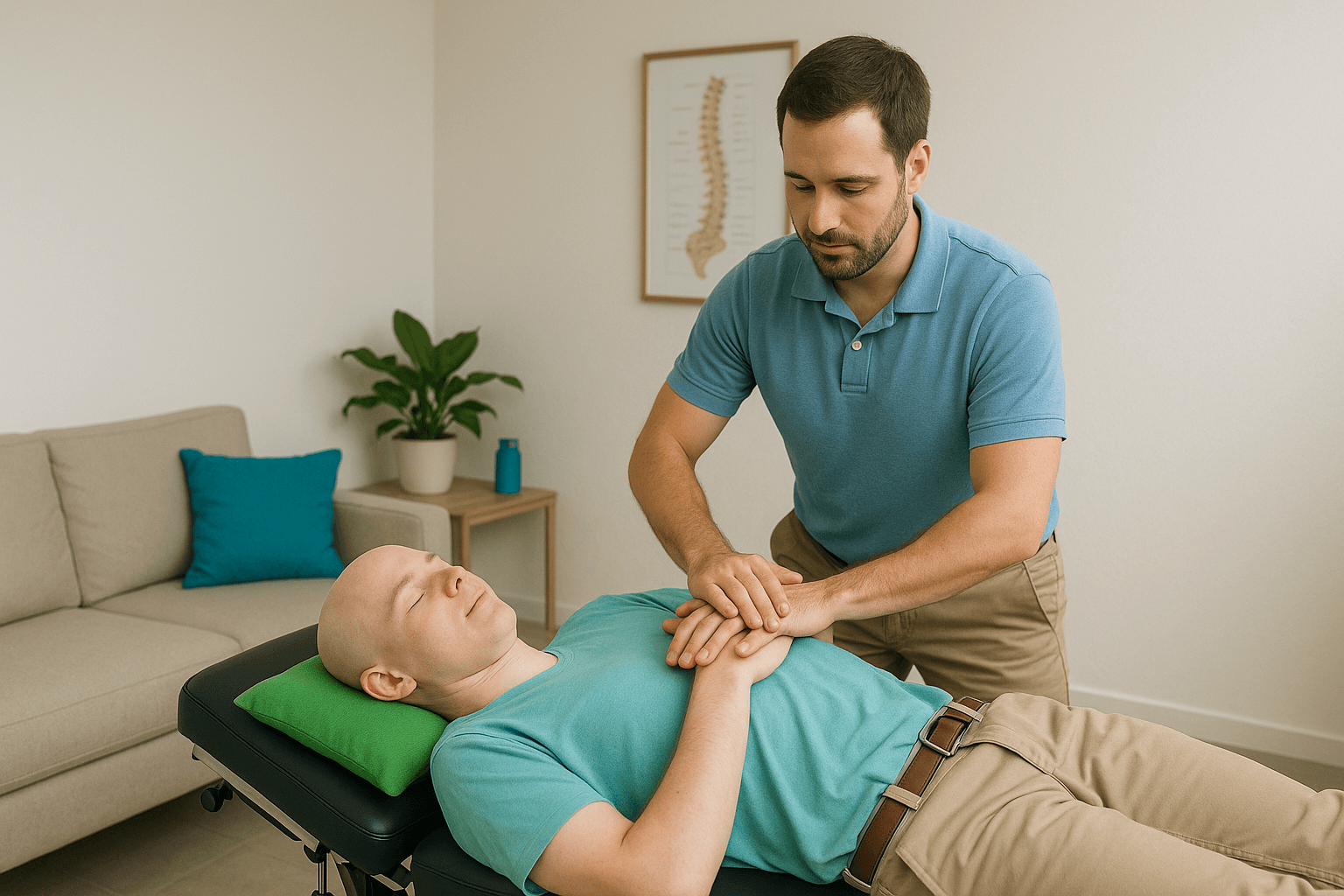Many people experience chronic pain without realizing that poor posture is the root cause. Over time, small misalignments in the spine and joints create imbalances, forcing the body to compensate in unhealthy ways. This can lead to persistent discomfort, joint stress, and mobility issues. Understanding how postural imbalances develop and how to correct them is essential for long-term pain relief and overall well-being.
Jump To:
TL;DR Quick Guide
- Postural imbalances develop when and of the skeletal bones misalign in a way that your body cannot self-correct. Then, in order to compensate, certain muscles become tight and others weaken, leading to chronic strain.
- Common issues include forward head posture, rounded shoulders, and uneven hips.
- These imbalances put stress on joints, muscles, and nerves, causing persistent pain.
- Fixing posture requires awareness, corrective exercises, and professional care.
- Advanced BioStructural Correction (ABC) and targeted strengthening can help restore proper alignment.
How Postural Imbalances Cause Chronic Pain
1. Muscle Imbalances and Compensation
- Poor posture always results in some muscles working too hard while others become weak.
- This imbalance leads to chronic tension in certain areas, especially in the neck, shoulders, lower back, and hips.
- Over time, the body adapts to these imbalances, reinforcing poor movement patterns that cause pain.
2. Increased Joint and Nerve Stress
- When the spine is out of alignment, it places uneven pressure on joints.
- This leads to wear and tear, increasing the risk of conditions like arthritis and disc degeneration.
- Nerve compression from poor posture can also result in numbness, tingling, and shooting pain in the arms and legs.
3. Common Postural Imbalances
- Forward head posture – Strains the neck and shoulders, leading to headaches and upper back pain.
- Rounded shoulders – Causes tension in the upper back and weakens the chest muscles.
- Anterior pelvic tilt – Creates lower back pain by shifting weight improperly.
- Uneven hips – Affects walking posture and may lead to hip, knee, or ankle discomfort.
4. Long-Term Effects of Ignoring Poor Posture
- Chronic pain becomes worse over time as imbalances continue to develop.
- Reduced mobility limits movement and increases the risk of injury.
- Poor posture can impact circulation, digestion, and even breathing efficiency.
How to Fix Postural Imbalances
1. Improve Postural Awareness
- Pay attention to how you sit, stand, and move throughout the day.
- Use a mirror or posture app to check alignment and identify problem areas.
2. Strengthen and Stretch Key Muscles
- This actually does not fundamentally improve posture but can help you manage your problem until you can get professional help.
- Strengthen core muscles to support spinal alignment.
- Gently stretch tight muscles, especially in the chest, hamstrings, and calf muscles.
- Perform exercises like planks, bridges, and shoulder retractions to balance muscle groups.
3. Adjust Ergonomics
- Ensure that your workstation, chair, and desk setup promote good posture.
- Use a chair with proper lumbar support and keep screens at eye level to avoid forward head posture.
4. Seek Professional Help
- Chiropractors and physical therapists can provide personalized adjustments and exercises.
- Advanced BioStructural Correction (ABC) helps correct spinal misalignments and restore natural posture.
5. Maintain Good Habits
- Take frequent movement breaks when sitting for long periods.
- Sleep with proper pillow support to maintain spinal alignment.
- Stay consistent with corrective exercises to prevent imbalances from returning.
Key Takeaways
- Poor posture leads to muscle imbalances, joint stress, and chronic pain.
- Common postural issues include forward head posture, rounded shoulders, and uneven hips.
- Strengthening core muscles and stretching tight areas can help restore alignment.
- Ergonomic adjustments and professional care like Advanced BioStructural Correction (ABC) can provide long-term relief.
- Awareness and daily posture habits are key to preventing further pain and dysfunction.
FAQs
1. How do I know if my posture is causing pain?
If you have persistent neck, back, or joint discomfort that worsens after sitting or standing for long periods, poor posture is likely a contributing factor.
2. Can stretching alone fix postural imbalances?
Stretching helps very little, professional help with skeleton realignment is necessary for long-term correction.
3. How long does it take to correct posture?
Noticeable improvements can happen with one treatment with Advanced BioStructural Correction. Serious improvement can take a few weeks to months, depending on the severity of the imbalance.
4. Does poor posture always cause pain?
Not immediately, but long-term misalignment increases the risk of discomfort, joint damage, and mobility issues over time.
5. Can chiropractic care help with postural imbalances?
Yes, chiropractic adjustments, especially Advanced BioStructural Correction (ABC), can help restore spinal alignment and reduce posture-related pain.






